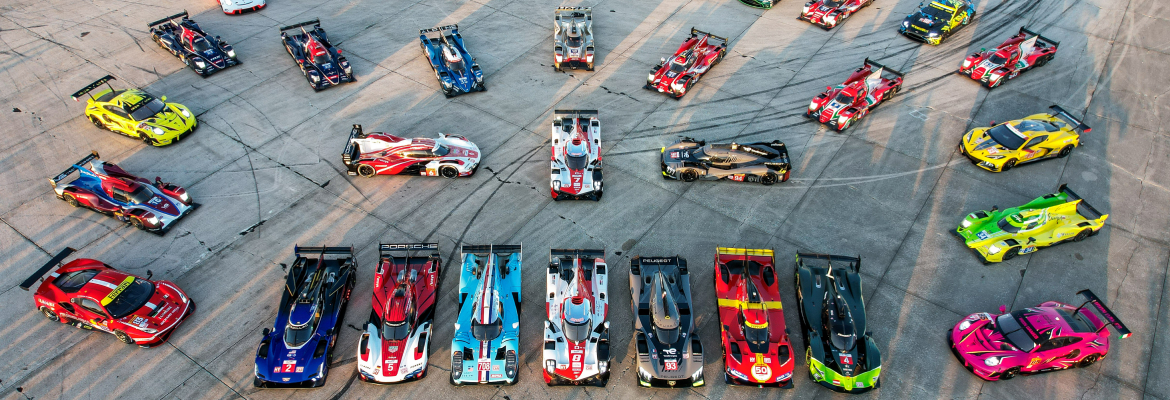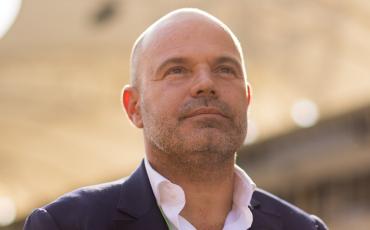
23/02/2024 News
Interview Frédéric Lequien

Paris, France, February 23rd 2024 - CEO of Le Mans Endurance Management, the man who oversees the day-to-day running of the FIA WEC sets out the main themes of what promises to be an exceptional season for Endurance racing.
This dynamism is part of a renewed partnership between TotalEnergies, the ACO and LMEM until 2028, focusing on the energy transition with initiatives such as the use of sustainable fuels:
“Excellium Racing 100 epitomises the values upheld by TotalEnergies and the FIA WEC: using innovation in racing to drive the energy transition”

With Lamborghini, Alpine, BMW and Isotta Fraschini joining Ferrari, Porsche, Toyota, Peugeot and Cadillac in the Hypercar class, which will feature nine manufacturers in 2024, this year looks extremely promising for elite Endurance racing…
It’s going to be an exciting season. Last year, there were thirteen entries in the Hypercar class. In 2024, there will be nineteen. FIA WEC has never had such a wide range of teams, nor so many competitors. Interest in the championship from manufacturers, drivers and fans is at all-time high. With so many brands competing in the elite class, the future of our championship has never been so bright. Furthermore, another iconic car manufacturer, Aston Martin, is set to join the Hypercar class in 2025.

What has been the recipe for success?
I think the success stems from the deliberations undertaken jointly by the ACO, the FIA and the IMSA. As well as convergence with our American friends, the Hypercar regulations enable manufacturers to keep costs under control whilst offering them unrivalled freedom to design the prototypes. For example, the bold designs of the Peugeot 9X8 and Ferrari 499P are quite simply magnificent. I think it’s fair to say the FIA WEC features the most beautiful race cars in the world.
On the back of the boost given to the sport by the Centenary edition of the 24 Hours of Le Mans, can the arrival of drivers like Valentino Rossi or Mick Schumacher at Alpine Elf Endurance Team take Endurance racing to another level in terms of media coverage?
Obviously, it’s important for the FIA WEC to have big names competing in the championship, as well as the most prestigious manufacturers. When we announced that Valentino Rossi, Mick Schumacher and Jenson Button were all joining the championship, the media coverage and reaction on social media was exceptional! It just goes to show how Endurance racing has become extremely attractive. But we mustn't forget that there are many other great and talented drivers competing in the FIA WEC this year.
There will no LMP2 class in the FIA WEC this year, whilst the LMGT3 is new in 2024: what was the thinking behind these changes? Is it about streamlining the championship?
Following the growing success of the Hypercar class, we were forced to take some tough decisions. Like any championship, we have to adapt and move with the times. This doesn’t mean that LMP2 has disappeared altogether. It is still the elite class of the European Le Mans Series (ELMS), the FIA WEC’s promotional formula, and the LMP2 class will still be contested at the 24 Hours of Le Mans. The LMP2 teams and drivers have provided some spectacular on-track racing for many years and we are very grateful to them for that.
There are going to be eighteen cars and nine manufacturers in the LMGT3 class. How do you explain this instant popularity?
The new LMGT3 class is based on the GT3 technical platform defined by the FIA. This has proved very successful in customer racing, is used by a wide range of brands and models and is popular with gentlemen drivers, who are an essential part of the FIA WEC. We have already reached the maximum number of LMGT3 entries in its first season, with a total of eighteen cars provided by high-profile newcomers such as BMW, Ford, Lamborghini, Lexus and McLaren, who have joined existing manufacturers Aston Martin, Corvette, Ferrari and Porsche.
What discussions were held together with TotalEnergies that led to Excellium Racing 100, a fully-sustainable biofuel, being introduced in 2022?
Since 2022, TotalEnergies has provided the first fully-sustainable biofuel to be used by all the cars competing in a major FIA championship. This fuel, sourced from the circular economy – and more specifically by recycling biomass residues from the French wine-making industry – meet the requirements of the FIA and the manufacturers as well as those of the European directive on renewable energies. Excellium Racing 100 epitomises the values upheld by TotalEnergies and the FIA WEC: using innovation in racing to drive the energy transition. Introducing this fuel has enabled the CO2 emissions of the prototypes and GT cars competing in the FIA WEC to be reduced by at least 65%.

You emphasize the importance of innovation, such as the work done with TotalEnergies on fuel or the project undertaken with the group on the future introduction of Hydrogen power at Le Mans. Is that also the key to the current success of Endurance racing? It is a perfect arena for manufacturers to test and promote their mobility solutions of the future?
Motorsport provides a unique research and development platform, enabling sustainable technologies to be introduced that will subsequently benefit motorists all around the world. Given the extreme demands of endurance racing, the FIA WEC is at the cutting edge of innovation. In terms of design, performance and safety, the FIA WEC provides the perfect setting for car manufacturers to implement their innovations. Our regulations offer great flexibility, aimed at showcasing hybrid technologies, developments in sustainable fuels and reductions in the carbon footprint of the vehicles. These technologies match the strategies of the manufacturers. That’s one of the reasons that the FIA WEC field is so big.
What things are being considered for the future to ensure Endurance racing continues to be successful?
As you mentioned, hydrogen power is the next step towards decarbonised racing. The time has come to show that controlled, reliable and high-performance hydrogen technology provides a real alternative to fossil fuels, and can do so without any CO2 emissions. Hydrogen technology has been chosen to be used in the very near future in the FIA WEC and its flagship race, the 24 Hours of Le Mans, through the Mission H24 programme and a dedicated class.
This year sees Qatar added as a venue to the race calendar, hosting the Prologue this month followed by the opening race. It will be the second longest event of the season after Le Mans and conditions are expected to be very hot. Was it a deliberate move to start the year with such a big challenge?
Both in terms of its race track and infrastructure, the Lusail International Circuit meets all the requirements of elite motorsport. The renovation work done in Lusail has made it one of the most prestigious race tracks in the world. It therefore made sense for Qatar to join the FIA WEC calendar. Promoting motorsport and the FIA WEC in new markets will be beneficial both for racing fans and car manufacturers.
The calendar now features eight races. Do you see that evolving in the future?
I think it’s all about balance. The race calendar aims to satisfy the overall interests of the championship, as well as those of the partners, the manufacturers, the teams and the fans. In order to come up with the best possible calendar, we have to find the right balance between including iconic race tracks and adding new locations. With races being held this year at Imola and Qatar, and the highly-anticipated return of the championship to Interlagos and Austin, the 2024 calendar of the FIA WEC meets this requirement perfectly.

